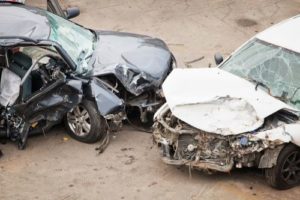Potential Causes & Concerns for Driverless Car Accidents
 When we were first introduced to the self-driving car by Google, we were left in awe of the capabilities. We were also left with plenty of questions regarding its operation and its safety. What happens when the car has the option to change lanes? What if there’s a person ahead of you in that lane? How does the vehicle make its decisions? These are legitimate questions to ask because driverless cars have the potential to cause a collision and remove decision-making power from the driver.
When we were first introduced to the self-driving car by Google, we were left in awe of the capabilities. We were also left with plenty of questions regarding its operation and its safety. What happens when the car has the option to change lanes? What if there’s a person ahead of you in that lane? How does the vehicle make its decisions? These are legitimate questions to ask because driverless cars have the potential to cause a collision and remove decision-making power from the driver.
Doubt about the safety of driverless vehicles was raised earlier this year when it was reported that Google’s self-driving vehicle caused its first crash.
According to the reports, the vehicle was traveling on El Camino Real in Mountain View when it got into the right lane to make a right turn. It detected sand bags after switching lanes and attempted to go around them, putting itself in front of an oncoming bus and striking the side of the bus. The autonomous vehicle was traveling just two miles per hour while the bus was traveling 15 miles per hour. No injuries were reported, but Google’s vehicle did suffer damage.
While Google’s self-driving vehicle had been in prior accidents, this is the first time that the company has admitted that the technology was at fault in the collision. This raised questions about how someone would bring forth a lawsuit if an injury occurred.
A driverless vehicle can cause an accident if it does not detect another vehicle when changing lanes, fails to detect vehicles ahead of it, or makes a turn when it isn’t supposed to.
It is important to make sure the detection software on these vehicles is perfect prior to releasing them onto the market. Despite traveling over one million miles since 2009, the Google self-driving vehicle has been involved in 17 crashes, all listed as due to human error prior to this one. If these vehicles are to reach Google’s prediction of being road-ready by 2020, it must be apparent that they are safe for everyday use and can detect other vehicles, pedestrians, bicyclists, and motorcycles accurately to avoid injury-causing accidents.
If someone ends up injured as a result of these self-driving cars, it is important to determine if the manufacturer is at-fault for the damages. These will be difficult cases to handle, requiring the help of skilled and experienced Florida defective product lawyers to stand by your side and help you navigate legal complexities.
To learn more, call Clark, Fountain, La Vista, Littky-Rubin & Whitman and speak with a member of our team.
